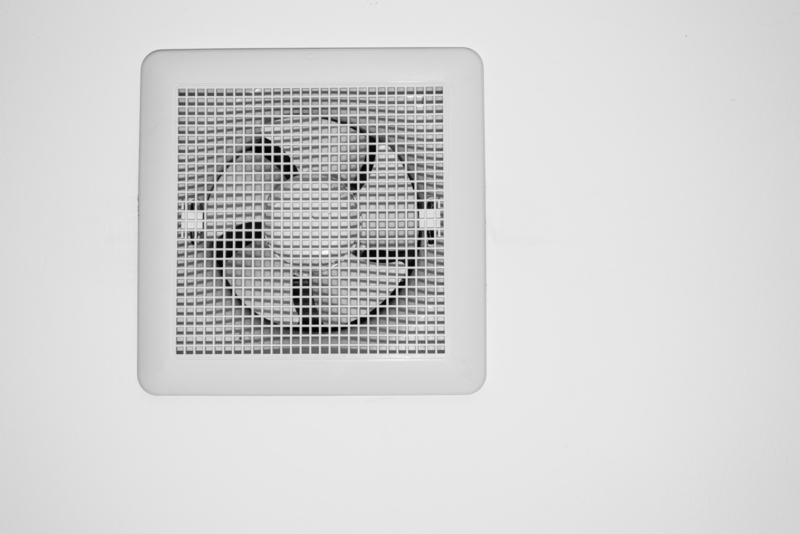Protect Your Velvet Curtains with These Essential Washing and Care Tips
Posted on 18/05/2025
Protect Your Velvet Curtains with These Essential Washing and Care Tips
Velvet curtains are a timeless addition to any living space, offering an unmatched blend of luxury, warmth, and sophistication. However, their lush texture and delicate fibers demand special care to preserve their beauty and lifespan. Whether your velvet drapes are modern masterpieces or vintage treasures, understanding how to clean velvet curtains and maintain them properly is crucial. In this comprehensive guide, we'll unveil the essential washing and care tips to keep your velvet window dressings vibrant and flawless for years to come.
Why Special Care is Needed for Velvet Curtains
Velvet is a unique fabric woven from various materials such as silk, cotton, or synthetic fibers. Its distinctive plush pile is what gives velvet curtains their soft sheen and opulent appearance. However, this very texture makes them prone to dust accumulation, crushing, and even staining. Regular cleaning methods used for other curtains can damage the pile, fade the color, or flatten the elegant surface of velvet. Thus, proper care for velvet drapes is non-negotiable if you want to protect your investment.

The Different Types of Velvet Used in Curtains
Not all velvet is created equal. Before you dive into cleaning or washing velvet curtains, it's important to identify which type you own:
- Silk Velvet: The most luxurious and delicate, requiring professional cleaning.
- Cotton Velvet: More durable but still benefits from gentle handling and specific washing techniques.
- Synthetic Velvet: Includes polyester or nylon blends, often more resilient and can sometimes be machine-washed with care.
- Crushed or Embossed Velvet: Features unique textures or patterns that are particularly sensitive to agitation and heat.
Always check the manufacturer's care label before cleaning any velvet curtain to ensure you don't inadvertently harm the fabric.
Preparation Before Washing Your Velvet Curtains
Getting your velvet curtains ready for cleaning is essential. Here's what to do before you start:
- Remove Dust: Use a vacuum cleaner with a soft brush attachment to gently remove surface dust and lint. Always vacuum in the direction of the nap -- the raised fibers on the surface.
- Spot Test: Pick an inconspicuous area and test any cleaning solution to ensure it doesn't discolor the curtain.
- Check for Stains: Identify any stubborn stains and treat them (more on this in the next section).
- Read the Label: Look for any special instructions or recommended cleaning methods.
How to Remove Stains from Velvet Curtains
Spot Cleaning Velvet Curtains
Immediate action is key when dealing with spills and stains on velvet drapes. Here's how to treat them effectively:
- Blot, Don't Rub: Gently blot the stain with a clean, dry cloth to soak up as much liquid as possible. Rubbing can push the stain deeper and damage the pile.
- Mild Cleaning Solution: Mix lukewarm water with a tiny drop of gentle liquid detergent or baby shampoo. Dampen a clean cloth with this solution and dab the stain, again following the direction of the nap.
- Rinse and Blot Dry: Wipe away any soap with a cloth dipped in plain water, then use a dry towel to absorb moisture.
- Restore the Nap: As the area dries, gently brush the pile with a soft-bristled brush to keep it looking plush.
Can You Machine Wash Velvet Curtains?
Washing velvet curtains in a machine is a delicate subject. Here's when it's possible -- and when it's not:
- Synthetic Velvet Curtains: Many polyester or nylon-based velvets can handle a gentle cycle with cold water. Always use a mild detergent and skip the fabric softener.
- Cotton Velvet Curtains: Some cotton velvets may be machine-washable if labeled "machine safe" -- but a gentle cycle and cold water are a must.
- Silk or Antique Velvet Curtains: These should never be machine-washed. The agitation and water can irreparably damage their fibers.
When in doubt, hand washing velvet curtains or opting for professional cleaning is always safer.
Hand Washing Velvet Curtains
Step-by-Step Velvet Curtain Handwashing Guide
- Fill a Bathtub or Large Basin: Use lukewarm water and add a small amount of gentle liquid detergent.
- Submerge the Curtains: Gently agitate the water with your hands to distribute the detergent, then lower the curtains in.
- Soak, Don't Scrub: Let the curtains soak for 10-15 minutes. Swirl gently, but avoid wringing or twisting.
- Rinse Thoroughly: Drain and refill the tub with fresh water. Rinse until all soap is gone.
- Remove Excess Water: Carefully lift the curtains out and squeeze out water gently by pressing between towels. Do not wring the velvet fabric.
Drying Velvet Curtains Safely
Whether you hand-washed or spot-cleaned, **never place velvet curtains in a tumble dryer**. Excessive heat and tumbling can crush and ruin the delicate fibers.
Instead, follow these drying tips:
- Hang the curtains over a shower rod or drying rack, ensuring they are not folded or bunched up.
- Keep them away from direct sunlight to prevent fading.
- Allow plenty of airflow to expedite the drying process.
- Once damp-dry (not soaking wet), you can re-hang them on the curtain rod to dry completely and reduce creasing.
Professional Cleaning for Velvet Curtains
For silk, antique, or extremely valuable velvet drapes, professional dry cleaning is recommended. Most dry cleaners offer specialized services for luxury fabrics, ensuring the right solvents and processes are used to maintain your curtains' integrity. This is especially important if your curtains are lined or heavily embellished.
Steaming and Ironing Velvet Curtains
The Best Way to Remove Wrinkles from Velvet
Velvet can develop creases during washing or after storage. Avoid ironing directly, as direct heat can crush the pile and leave irreversible marks. Instead:
- Use a Clothes Steamer: Hold a handheld garment steamer a few inches from the fabric and gently steam down the curtain, moving in the direction of the nap.
- Steam in the Bathroom: Hang your velvet curtains in the bathroom and run a hot shower. The steam will help the fibers relax and wrinkles fall out naturally.
If ironing is absolutely necessary, always use the lowest setting, keep a thick towel between the iron and velvet, and apply minimal pressure.
How to Maintain Velvet Curtains Between Washes
Because frequent washing can wear down velvet's texture and color, maintenance is key for long-lasting beauty. Here's what to do:
- Regular Dusting: Gently vacuum with a soft-brush nozzle, following the nap, every week or two.
- Prevent Sun Damage: If possible, install sheer liners to diffuse intense sunlight and prevent fading.
- Avoid Moisture: Maintain good air circulation to deter mold and mildew, especially in humid rooms.
- Immediate Stain Treatment: Blot any spills promptly to prevent setting.
Tips for Storing Velvet Curtains
Proper storage is vital to protect velvet curtains when not in use:
- Store in a Cool, Dry Place: Avoid basements, attics, or any area prone to dampness.
- Roll, Don't Fold: Rolling prevents creasing and pile crushing. Wrap them in a cotton sheet for added protection.
- Avoid Plastic Bags: These can trap moisture and cause mildew. Use breathable garment bags or cotton covers.
Common Mistakes to Avoid with Velvet Curtain Care
Even with the best intentions, a few simple missteps can severely damage your elegant velvet drapes. To keep them pristine, avoid these common velvet curtain care mistakes:
- Washing too frequently or using hot water.
- Wringing, twisting, or vigorously scrubbing the fabric.
- Ironing directly without protection.
- Exposing to harsh sunlight or storing in damp conditions.
- Ignoring the manufacturer's care instructions.

Frequently Asked Questions about Washing and Caring for Velvet Curtains
Can I wash velvet curtains in the washing machine?
Some synthetic velvets can be machine-washed, but always use a gentle cycle, cold water, and mild detergent. For silk or antique velvet, stick to hand washing or professional dry cleaning.
How often should I clean my velvet curtains?
For most homes, vacuum every week or two, and do a full wash or professional clean every 6 to 12 months, or when visibly soiled.
Can velvet curtains go in the dryer?
No. Always air-dry velvet curtains to prevent heat damage and pile crushing.
How can I revive crushed or flattened velvet?
Try gentle steaming or brushing the nap with a soft clothes brush. Persistent flattening may require professional attention.
Conclusion: Keeping Your Velvet Curtains Beautiful for Years
Velvet curtains are a striking design statement and, with proper care, can retain their sumptuous look and feel for generations. By following these essential velvet curtain washing and care tips, you'll ensure your drapes remain spotless, lustrous, and vibrant. Always err on the side of caution -- especially with valuable or heirloom velvet -- and when in doubt, request expert help.
Remember, a little attention goes a long way: routine dusting, careful handling, sensitive cleaning, and smart storage practices will protect your velvet curtains and keep them gracing your windows with elegance and style for many years to come.
- Gentle vacuuming and spot-cleaning minimize wear and tear.
- Always follow washing instructions specific to your curtain's velvet type.
- Air-dry and steam to remove wrinkles with minimal risk.
- Store properly to avoid crushing the beautiful pile.
With these velvet curtain care secrets in your toolkit, your windows will always have the softest, most luxurious look in the neighborhood!



